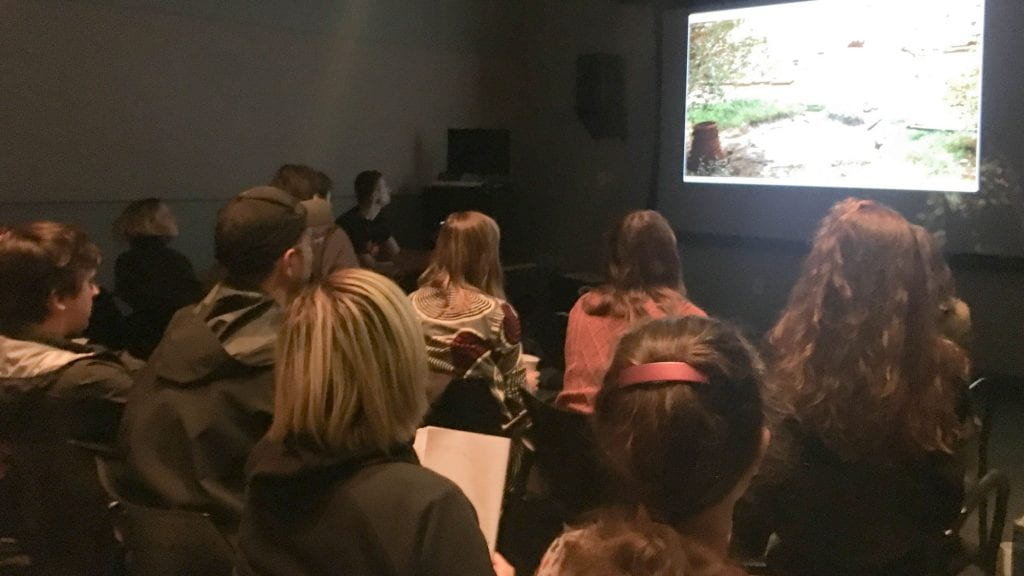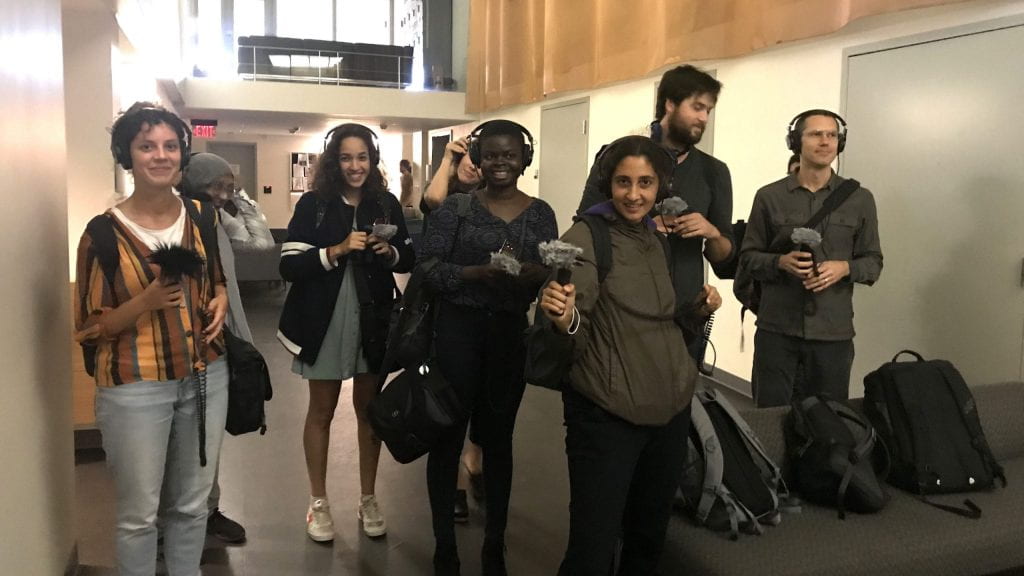
We just finished a very inspiring master class with Lebanese filmmaker and artist Ali Cherri – part of his visit to Harvard that includes last night’s Artist Talk and tonight’s Harvard Film Archive screening.
A gathering of Critical Media Practice Students, Film Study Center Fellows, and undergraduates who are engaged in artistic practice got to hear in detail how Ali conceptualizes and technically realizes his work. Ali explained how his trilogy of “The Disquiet,” “The Digger” and work-in-progress “The Dam” began with an interest in how moments of catastrophe in his home region – from natural disasters to war – can become extended forever in time as the agony seems to never end. How does one represent the experience of violence when it’s not always “spectacular”?
Ali sometimes starts from a place of documentary, gathering images observationally and building relationships with people in their daily lives, and then slowly moves into fiction as he choreographs scripted using involving people in their space as actors to create the meaning he seeks. His imagery can ultimately cross over into the supernatural, as in the striking last shot of “The Disquiet.”
Participants seemed particularly interested in Ali’s process of creating installations, including those related to single-channel works and free-standing pieces like the striking “My Pain is Real” that explores ideas about the digital mediation of violence through manipulation of his own face.
Thanks to Ali Cherri, HFA, and CCVA for this inspiring visit!








